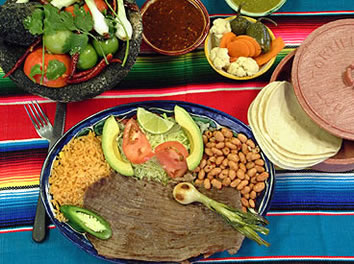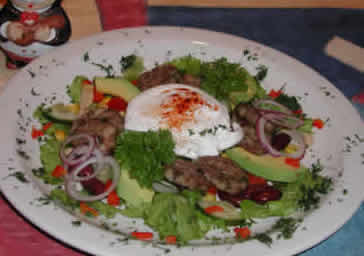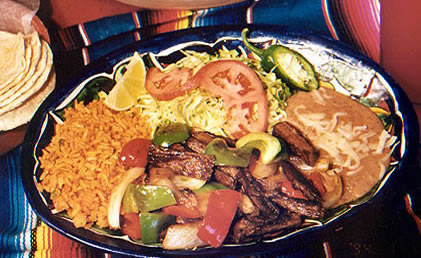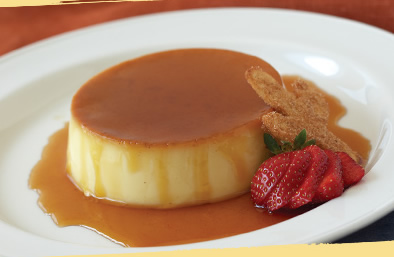
 |
The richness of the Mexican cuisine flows from the concern for the sensory experience of eating, for we know that the taste, smell, and look of the food can enrich and inspire the spirit. It is often said that "Cuisine is Culture", and to understand the development of Mexican cuisine it is important to know something of the history of Mexico. In the pre-Colombian period, the diet of Mexican ancestors was purely native, with nutrition based on the great product of Mexican agriculture, corn. When thrashed and boiled into a "pozole"(hominy), the corn could be made into flavorful tortillas and tamales, or rendered into flour for other variations.
The diet of corn was supplemented with vegetables and meat. A great variety of spices, known as "Chile," could be combined with sweet potato, beans, squash and many kind of meat like poultry, beef and pork. After the Conquest and during the colonial period, the country's cuisine changed dramatically with the culinary influences brought along by the Spanish. With the conquest and their descendents came a taste for yeast, rice, olives, wine, spices from India, beef, and different kinds of fruit. Today's Mexican cuisine is a blend of the original Indian fare with the Spanish.
 |
 |
 |
Last updated March 13, 2006 by Maria Estrada